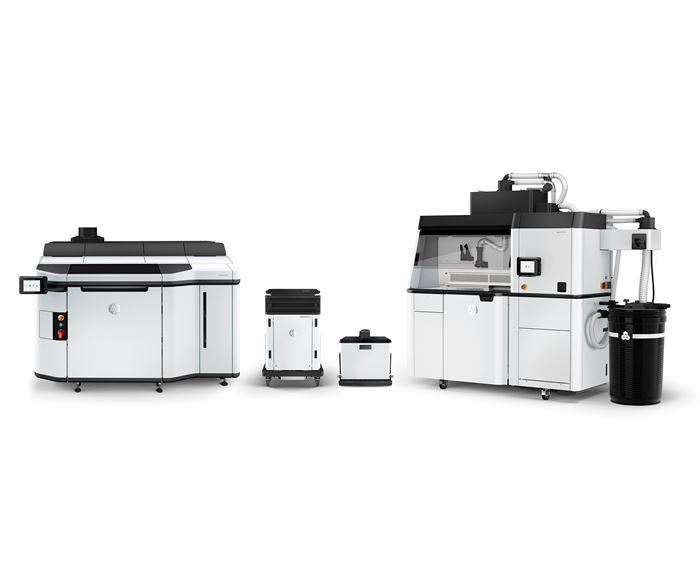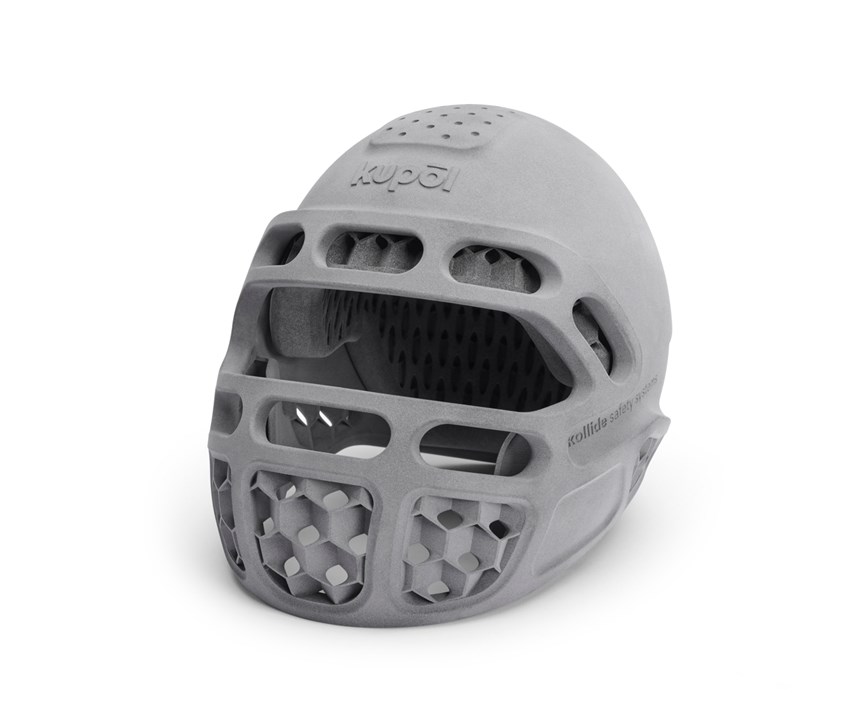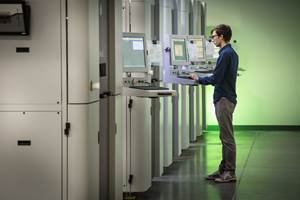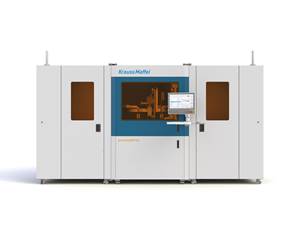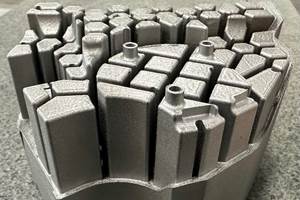HP Enlarges Its 3D Printing Footprint with Four Major Announcements
A more efficient Jet Fusion printer for volume production; a new elastomeric TPU powder; a 3D printing manufacturing network of qualified production shops; and deeper integration with Siemens’ digital manufacturing software.
A brand-new 3D printing system, a new elastomer material, a global production network of qualified 3D printing shops, and a deeper integration with Siemens’ digital manufacturing software were all announced last month by HP.
• HP’s latest entry in 3D printers for mid-volume production of plastic parts (over 200/week) is its Jet Fusion 5200 Series, said to provide greater manufacturing predictability, efficiency, repeatability and quality than ever before. It also boasts up to 40% higher productivity and up to 30% lower operating costs. It has the same build volume and layer resolution as the earlier 4200 Series, but the build speed is 23% higher. Like the 4200 Series, the 5200 Series is said to be competitive with injection molding for runs of more than 100,000 small parts and up to 5000 to 10,000 larger parts. The Model 5200 is designed for serial production of up to 800 parts/week and the 5210 is more economical for greater volume needs. The 5210 benefits from larger material supply containers, faster scanner calibration, and indicator lights to show machine status at a distance. Both models are available now.
The 5200 series reportedly gains greater production efficiency from a change from the former two-pass mode to one pass, and from the introduction of new “natural cooling” accessories that mount on top of the build module. Now, hot parts no longer have to cool inside the build module, which can take hours, but are automatically transferred to the new cooling module, freeing up the build module for another run. The new one-pass mode reportedly will be even more important in the future to allow fusion of engineering thermoplastics at much higher temperatures.
The 5200 Series also boasts “industrial-level OEE” (overall equipment efficiency) greater than 80%, stemming from a “breakthrough” in uptime, and “injection-molding-grade” accuracy and repeatability on all three axes, yielding a Cpk of 1.3 which HP says is “unheard of today in 3D printing.” HP credits newly developed “preventive-maintenance intelligence” and automated machine learning for tighter process control and self-optimizing performance that “gets better over time.” Also, a new thermal camera inside the machine that monitors the process has 5X finer resolution than the one on the 4200 Series. New HP 3D Center software helps track, manage, and optimize operation of multiple printers. New HP 3D Parts Assessment service performs an economic analysis and optimization of part designs for 3D printing.
• At the end of this year, a new elastomeric TPU material will become generally available for the 5200 Series. Ultrasint 3D TPU01 powder from BASF is aimed at flexibility and shock absorption in automotive, consumer, and industrial products. Early applications include a bike helmet from Kupol of Montreal (pictured), a wind-turbine blade clamp from Vestas of Denmark, and a code-wheel cover for HP textile and large-format printers.
• To provide OEMs with easier access to industrial-volume 3D printing services, HP launched its Digital Manufacturing Network, a global community of production partners using HP’s Jet Fusion equipment and vetted for high levels of 3D printing expertise, robust quality management, and proven capability for volume production. Current members include Forecast 3D, GKN Powder Metallurgy, GoProto, Jabil, Materialise, Parmatech and ZiggZagg NV.
• In order to provide an “end-to-end additive-manufacturing (AM) solution,” HP has deepened its AM alliance with Siemens of Germany to integrate HP’s 3D printing and data intelligence platform, including the new 5200 Series, with Siemens’ Digital Enterprise software portfolio. That includes Siemens’ NX CAD/CAE, an NX AM for HP Multi Jet Fusion module with direct printer interface (undergoing certification by HP for the 5200 Series), Teamcenter for product lifecycle management (PLM), Tecnomatix Plant Simulation, Simatic IT for MES, and MindSphere for performance analytics and industrial IoT (internet of things, aka Industry 4.0).
Related Content
420 Stainless Steel Now Qualified With TrueShape 3D Printing Technology
NPE2024: Mantle's Additive Manufacturing Technology is Designed for Precision Tooling
Read MoreGetting into Plastics Additive Manufacturing? Avoid these Six Common Errors
There are a lot of 3D printing technologies out there, and it’s not uncommon for processors new to additive manufacturing to get tripped up. Here are some typical snafus, along with advice on how to avoid them before you start making parts.
Read MoreKraussMaffei Launches Two Additive Manufacturing Lines at K 2022
Long established in injection molding, extrusion and polyurethane reaction process machinery, 184-yr-old KraussMaffei prepares to enter the industrial additive manufacturing market.
Read MoreNew Tool Steel Qualified for Additive Manufactured Molds and Dies
Next Chapter Manufacturing says HTC-45 — an optimized H-13 — will offer superior thermal transfer and longer tool life.
Read MoreRead Next
Understanding Melting in Single-Screw Extruders
You can better visualize the melting process by “flipping” the observation point so that the barrel appears to be turning clockwise around a stationary screw.
Read MoreTroubleshooting Screw and Barrel Wear in Extrusion
Extruder screws and barrels will wear over time. If you are seeing a reduction in specific rate and higher discharge temperatures, wear is the likely culprit.
Read MoreProcessor Turns to AI to Help Keep Machines Humming
At captive processor McConkey, a new generation of artificial intelligence models, highlighted by ChatGPT, is helping it wade through the shortage of skilled labor and keep its production lines churning out good parts.
Read More
